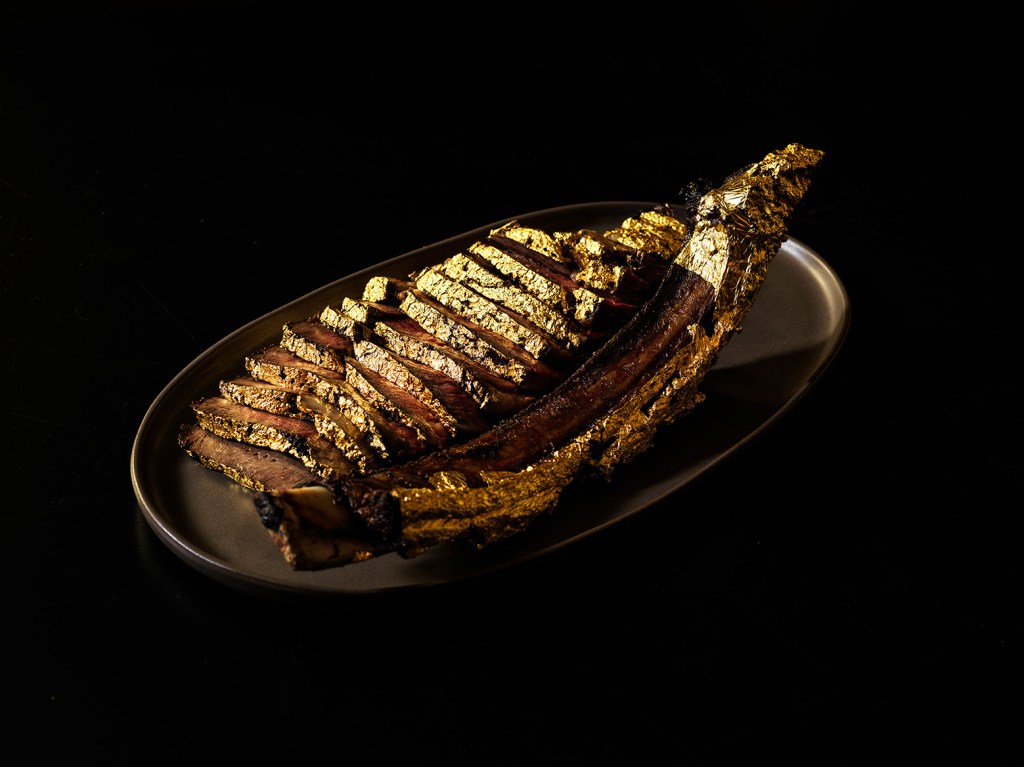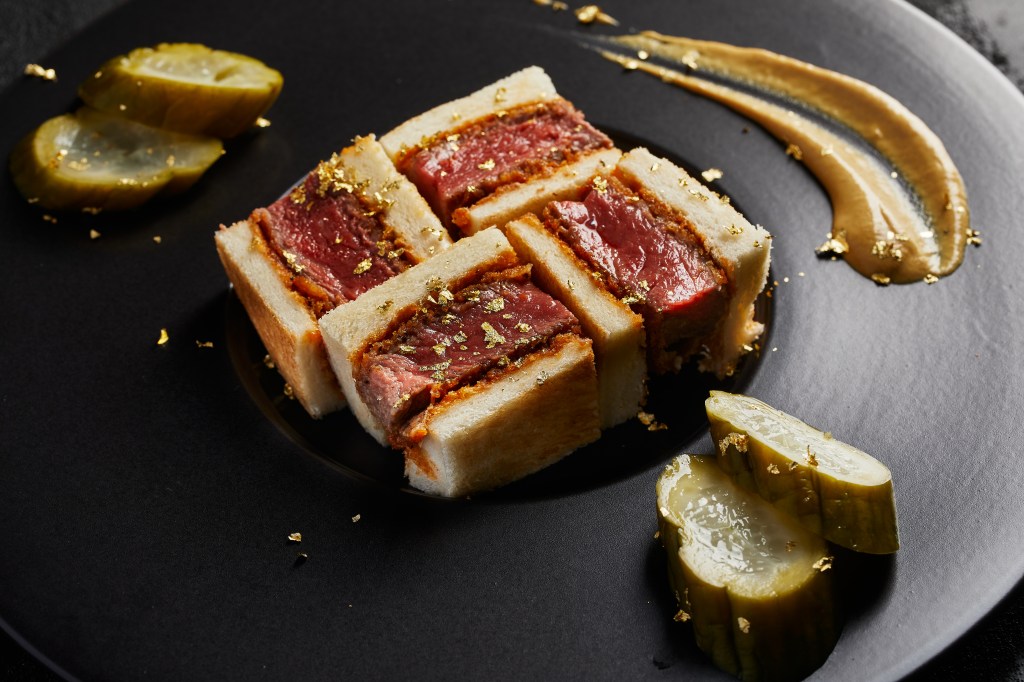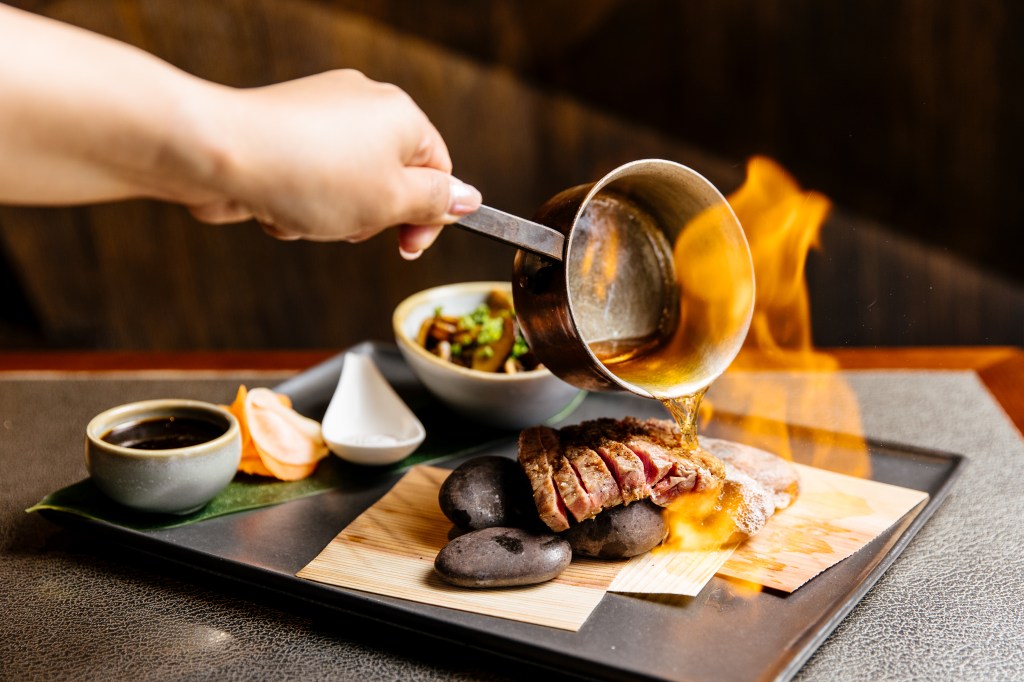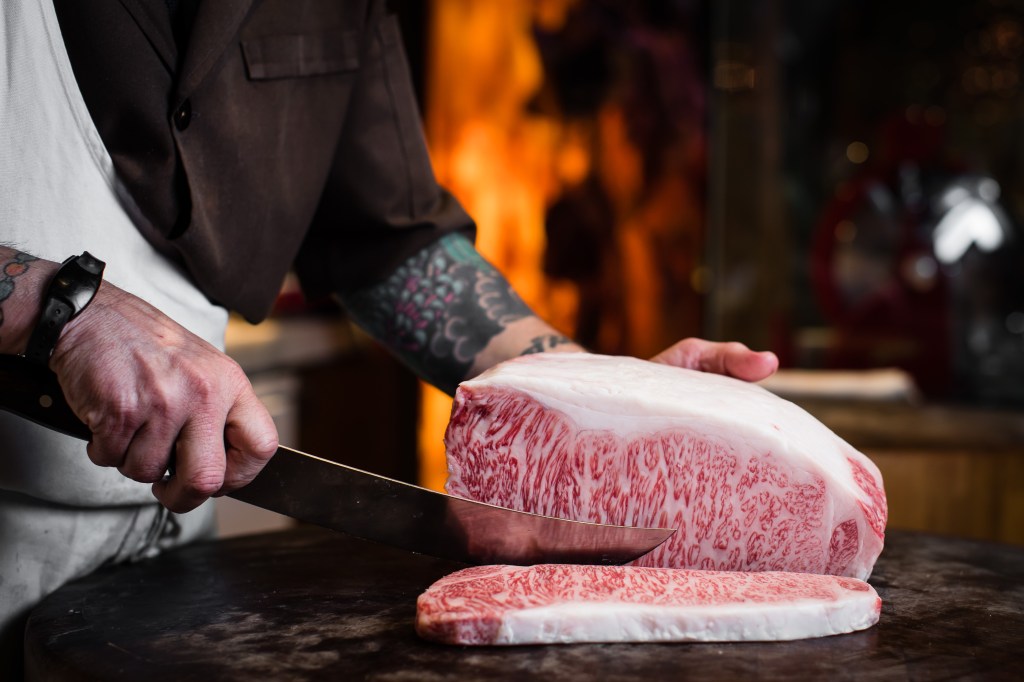If you are on the prowl for a deluxe piece of beef, here’s some places to hunt down.

This gold-leaf encrusted wagyu tomahawk from Sydney’s Botswana Butchery was Australia’s most expensive steak, according to a Forbes Australia investigation into the top end of the local beef market.
The 1.6kg bone-in ribeye comes from an animal feedlotted for 400 days at Jack’s Creek in northern NSW. It will set you back $875 at the Martin Place restaurant which opened early this year after originating in Queenstown, New Zealand.
However, on a per-kilogram basis, the three restaurants in Melbourne’s Wagyu Ya Group have what could be considered Australia’s most expensive steak. And it’s in a sandwich! The Japanese-grown Kobe wagyu eye fillet costs $2 a gram – almost four times more per kilogram than Botswana Butchery’s. You can also buy it as a stand-alone dish at the equivalent of $2,000 a kilo. If that’s a little steep, the sirloin goes for $1,800 a kilo.

“We actually don’t make much money on that at all,” says Wagyu Ya general manager Cimmarro Lau. “It’s more a promotional thing for customers to know we have it. We are ridiculously proud that we serve it.”
Lau says a restaurant in South Australia and his group of three Melbourne eateries are the only venues licensed by Kobe beef to sell the product in Australia. “Everyone else is getting it blackmarket … the Kobe Association will no doubt step in and send out nice letters to them.”
There is approximately 120g of beef on the Wagyu Ya sandwich (so $240 worth), which is crumbed with Japanese flour in fresh soybean oil, with a sauce of Worcestershire, Japanese tomato sauce and a little beef intestine pan-seared and grated for added texture and flavour, served on shokupan, a Japanese milk bread.
Meanwhile, Nobu at Crown Perth has an offering of 100g of prime 2GR (think Gina Rinehart) wagyu from Hancock Agriculture that sells for $110 – or $1,100 a kilogram.

Another honourable mention goes to Black Bar and Grill at Sydney’s Star casino which has a 180g David Blackmore full blood wagyu – fed 600 days – 9+ going for $160 which works out at $888.90 per kilo
Claude Renshaw, general manager of Hancock’s South Burnett properties said the key to producing that quality of beef was to keep the cattle on a continuous “plane of nutrition”. And that did not involve giving them beer, massages and classical music – as has been said of Japanese wagyu farmers with little supporting evidence.
Such luxuries would be difficult on Hancock’s scale. It runs 38,000 head of wagyu after only becoming involved with the high-end breed in 2016. Wagyu have been demonstrated to have the best marbling – intramuscular fat – of any breed. And that fat melts at 36 degrees Celsius – four degrees lower than regular beef – so it literally melts in your mouth.
Renshaw said the 2GR cattle were put into feedlots at about 18 months old, then spent about 500 days there. They were fed more hay and silage – and less grain – than an equivalent animal put into a feedlot for the standard 90 days,
If you’re making Australia’s most expensive steak, its a slower process, says Renshaw. “It is not about trying to punch as much weight on as you can, because you’re also growing the animal and giving it time to mature. Laying down this marbling.”
Whereas most beef was slaughtered around 500kg, Australian wagyu was usually taken to about 700kg. The carcasses sell for about $9000, according to Anthony Puharich, chief executive of Vic’s Premium Meat Group.
In Japan they take full-blood wagyu through to 800kg and it costs about $30,000 to import it into Australia, says Puharich.
“You can walk into Victor Churchill (a butchery in Sydney and Melbourne) this afternoon and you can buy A5 Japanese Miyasaki wagyu and it will set you back $495 a kilogram for either scotch or sirloin.”

Why does it cost so much? “People really need to appreciate the effort,” says Puharich. “The determination, the knowledge – IP – that goes into making the best tasting beef in the world is fucking enormous. If you want to build the best house in the world, it takes the best tradesmen. Meat’s no different. It’s about the right genetics, about husbandry, the land, the environment, what it’s been fed.”
“Nothing ever comes back.”
Logan Campbell – Botswana Butchery head chef
Meanwhile, last Friday night at Botswana Butchery, as the grill behind him flares and the smoke billows, head chef Logan Campbell is placing gold leaf sheets on the Jack’s Creek tomahawk from a 400-day fed wagyu.
As Australia’s most expensive steak, it is served up to a group of four – three women and a man – most of whom are videoing it as the sparkling gold ribeye enters the private room. They decline to be interviewed.
Campbell says he’s never tried the gold steak himself. He doesn’t eat a lot of meat.
And do the customers eat the gold?
“Nothing ever comes back,” he says.
Golden Rules
- The use of gold on food has been traced back to the ancient Egyptians and was also seen in the China, Japan and India.
- Today, gold is food additive 175. It must have a purity of at least 23 karat, below which it could contain other metals that are toxic if consumed. It is available in 8cm x 8cm sheets that cost about $5 each.
- Gold is inert and is not absorbed by the body and has no known health benefits or harms.
- The trend in gold-plated tomahawks was begun by Turkish chef Nusret Gokce, AKA Salt Bae, who sells them at his New York restaurant for US$1000.
- New York restaurant Serendipity 3 created the world’s most expensive dessert: a US$25,000 ice cream sundae filled with gold and 28 different cocoas.
- In 2012, a Kobe beef patty topped with Gruyere cheese (melted with Champagne steam), caviar, truffles and lobster, and wrapped in six gold-leaf sheets was reportedly selling from a New York food truck for US$666.